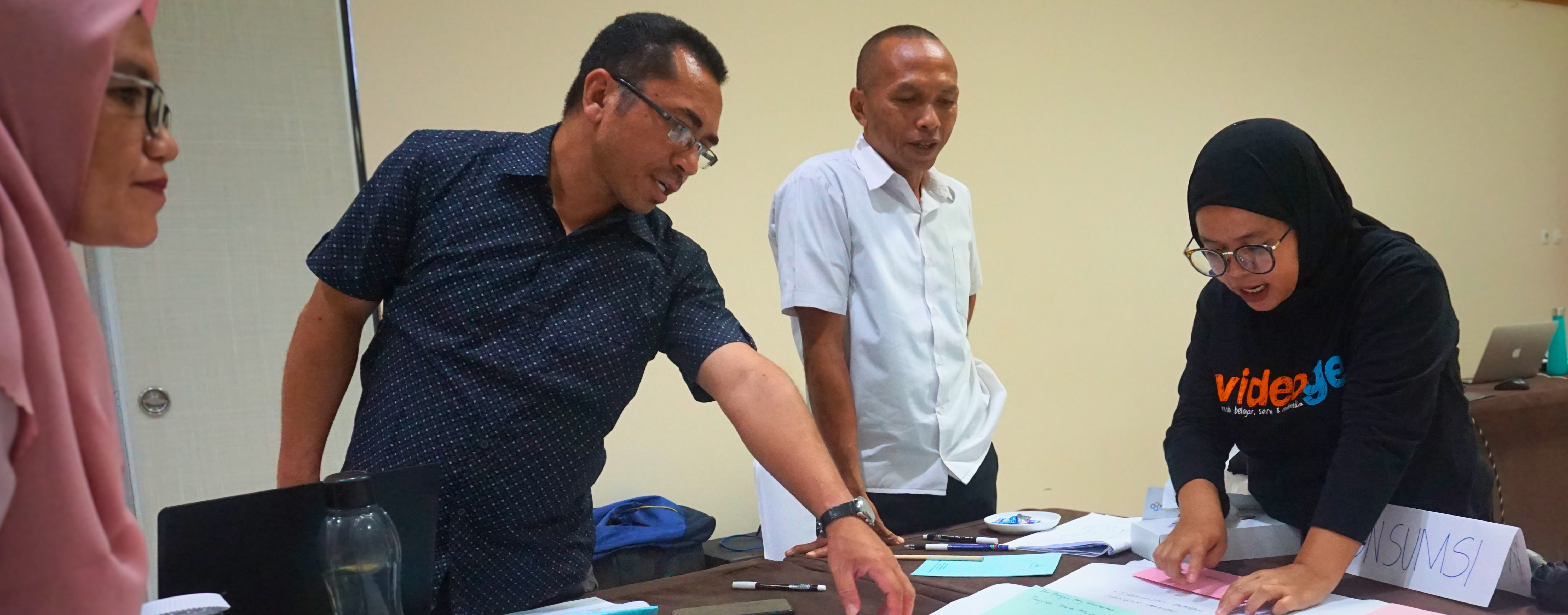
Climate Justice | August 8, 2023
Urban Futures unveils first lineup of transformative cities
Humanis Foundation
Untuk membaca artikel ini dalam bahasa Indonesia, klik di sini.
Hivos’ new, exciting Urban Futures program is working at the intersection of urban food systems, youth well-being, and climate action. Together with local partners we will cover ten intermediary cities in Colombia, Ecuador, Indonesia, Zambia and Zimbabwe.
Intermediary cities are growing fast. They are main regional hubs for flows of goods and people, which makes them key for a sustainable future and for young people in particular. That is why we believe youth should get involved in determining the narrative around food systems. They should play a meaningful role in local governance, policy making, and building a sustainable living.
Urban Futures is in its inception phase (until September 2023). At the moment we’re structuring a solid team, collecting information, and selecting our cities of operation and main partners. When these are identified, we can start localizing the program’s framework and co-create city strategies with local partners and experts.
First five cities selected
In selecting the first five cities we specifically looked at transformation potential in relation to food and youth. We focused on cities where Hivos, Yayasan Humanis dan Inovasi Sosial, RUAF and our partners have a solid track record. We scoped the interest of local authorities and assessed the existence of favorable policies, inclusive governance platforms, initiatives working with youth, clear urban-rural linkages, potential local partners and possibilities for risk mitigation. The city selection was based on available information and input from visits of regional teams to a wide variety of key informants.
We’re happy to announce the first five cities. They all differ in context, size, and forms of organization – and include selected municipalities that are part of a larger city, and conglomerates of municipalities.
Bandung in Indonesia
The city of Bandung is the capital of the province of West Java. It has a population of nearly 2.5 million people and a growing and dynamic youth community. The local authorities of Bandung are committed to working together for the improvement of the City Food System, supporting a multi-actor platform and a Regional Action Plan on Food. Bandung is an active member of Milan Urban Food Policy Pact and partners of Yayasan Humanis dan Inovasi Sosial, Hivos, and RUAF have been working in the city for several years.

The Association of the Northern Pacific Coast of the Province of Manabí (MANPANOR) in Ecuador
MANPANOR includes several counties and municipalities. The population totals 200,000 inhabitants, of which 60 percent are below 30 years old. MANPANOR was established to strengthen governance and participation of its citizens in various development issues, including transitioning towards a more inclusive, sustainable, healthy, and innovative food system. Deeply rooted in the identity and self-esteem of the people of Manabí, food has the potential to become an engine to promote social, economic, cultural and eco-systemic transformations.
Medellin in Colombia
Medellin is the second-largest city in Colombia with a relatively young population of approximately 2.5 million residents. It is a member of the Milan Urban Food Policy Pact and has implemented policies and initiatives to create a sustainable food system. An example is the Food and Youth Strategy, which focuses on promoting healthy eating habits among young children and adolescents. Furthermore, there is interesting work regarding the promotion of youth entrepreneurship with incubation centers, start-up accelerators, and funding schemes.
Chongwe in Zambia
Chongwe is a relatively small urban conglomerate located in Lusaka Province. It has a population of almost 150,000 people. Hivos has worked in both Chongwe and Lusaka for several years through programs such as Sustainable Diets for All, Voices for Just Climate Action, AfriFoodLinks and Healthy Food Africa. The work with Urban Futures will support the progress achieved until now.
Bulawayo in Zimbabwe
Bulawayo is the second largest city in Zimbabwe. It has a population of over 650,000 people, with more than 60 percent of young people. Bulawayo has a high level of unemployment, particularly among youth. Development of the agriculture and food sector has the potential to provide better opportunities for the city’s young population. Bulawayo has Urban Agriculture Policy Guidelines that provide the framework for poverty alleviation and improvement of the nutritional status of vulnerable groups. Now, local authorities are leading food governance. These effort are supported by RUAF and Hivos through several programs, including the recent Youth Food Action Project, with the Youth Food Change Labs.
* Adaptation of the article Urban Futures unveils first lineup of transformative cities on Hivos’ website.
Photo in the header: Diverse community members collaborate to develop a shared vision of West Manggarai’s future food system. Photo credit: Theresia Kinanti Dewi

